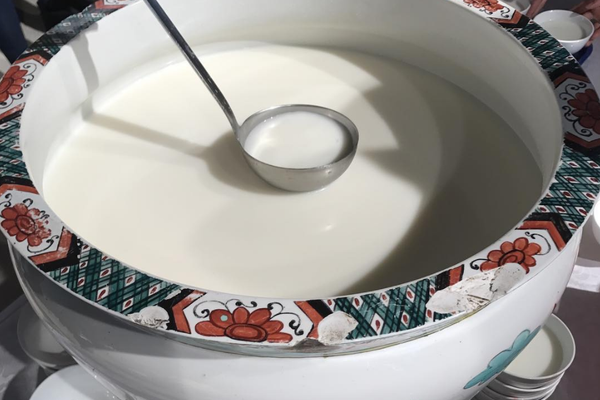Depending on the person you ask and what part of Eastern Europe he hails from, kissel is either a thick juice, a dessert soup, or even a gelatinous porridge. No matter where you find it, one thing is certain: Kissel is a veritable medley of forest-born ingredients and a constant presence at the dessert table.
The recipe for kissel varies from country to country, even region to region, but it always starts with a combination of fruit juice and starch. Some say that the thickening agent was added in times of scarcity to make juice more filling. How gelatinous and sugary the kissel ends up being depends on individual taste, but a common form is a sweet, red, semi-liquid soup. It can also be served hot, as a spiced winter drink, or enjoyed cold, as a jelly or custard.
After combining the likes of boiled strawberries, cranberries, or gooseberries with potato or corn starch, the resulting mixture is sweet, hearty, and nutritious. Some cultures even embrace kissel as a health tonic: Apple versions are said to help with digestion, blueberry to fight infections, and cranberry to get through a cold or flu faster.
The traditional treat might not have always been so sweet. The word kissel is derived from an old Slavic term meaning “sour.” An early reference to a food called “kissel” provides a recipe that’s a bit different from the one widely known today: a kind of gelatinous porridge made from oats and sweetened with syta (honey diluted with water).
Though the dessert versions are the most popular preparations in Slavic, Baltic, and Scandinavian countries, the traditional porridge still exists in the form of Russian “oat kissel.” Many Russians even refer to paradise as the land of “milky rivers and kissel banks,” though whether this refers to the oat dish or the sweet juice is open to interpretation.
Written By
 JamesRUDD
JamesRUDD
Sources
- russiapedia.rt.com/of-russian-origin/kissel/
- russia-travel-guide.com/cuisine/kissel.php
- rusizate.com/index.php/para-turistas/59-una-bebida-rusa-como-un-tipico-postre-o-kisel
- www.rbth.com/arts/2015/06/13/the_kissel_juice_or_a_meal_43651
- russia-travel-guide.com/cuisine/kissel.php
- books.google.com/books?id=2T9Jxdy2vJsC&pg=PA19&lpg=PA19&dq=kissel+porridge+syta&source=bl&ots=_HHgJsyrRS&sig=SEOucGun2NHEiDsE4CbaHzuSep4&hl=en&sa=X&ved=0ahUKEwiIuvnWwILaAhUthuAKHWE6AskQ6AEIRjAE#v=onepage&q=kissel%20porridge%20syta&f=false
- books.google.com/books?id=OLAHrc0gfIIC&pg=PA120&dq=kissel+russia&hl=en&sa=X&ved=0ahUKEwjq_ZWRxILaAhUHVd8KHXqYDGMQ6AEIJzAA#v=onepage&q=kissel%20russia&f=false














